- News
- Reviews
- Bikes
- Accessories
- Accessories - misc
- Computer mounts
- Bags
- Bar ends
- Bike bags & cases
- Bottle cages
- Bottles
- Cameras
- Car racks
- Child seats
- Computers
- Glasses
- GPS units
- Helmets
- Lights - front
- Lights - rear
- Lights - sets
- Locks
- Mirrors
- Mudguards
- Racks
- Pumps & CO2 inflators
- Puncture kits
- Reflectives
- Smart watches
- Stands and racks
- Trailers
- Clothing
- Components
- Bar tape & grips
- Bottom brackets
- Brake & gear cables
- Brake & STI levers
- Brake pads & spares
- Brakes
- Cassettes & freewheels
- Chains
- Chainsets & chainrings
- Derailleurs - front
- Derailleurs - rear
- Forks
- Gear levers & shifters
- Groupsets
- Handlebars & extensions
- Headsets
- Hubs
- Inner tubes
- Pedals
- Quick releases & skewers
- Saddles
- Seatposts
- Stems
- Wheels
- Tyres
- Health, fitness and nutrition
- Tools and workshop
- Miscellaneous
- Cross country mountain bikes
- Tubeless valves
- Buyers Guides
- Features
- Forum
- Recommends
- Podcast
feature
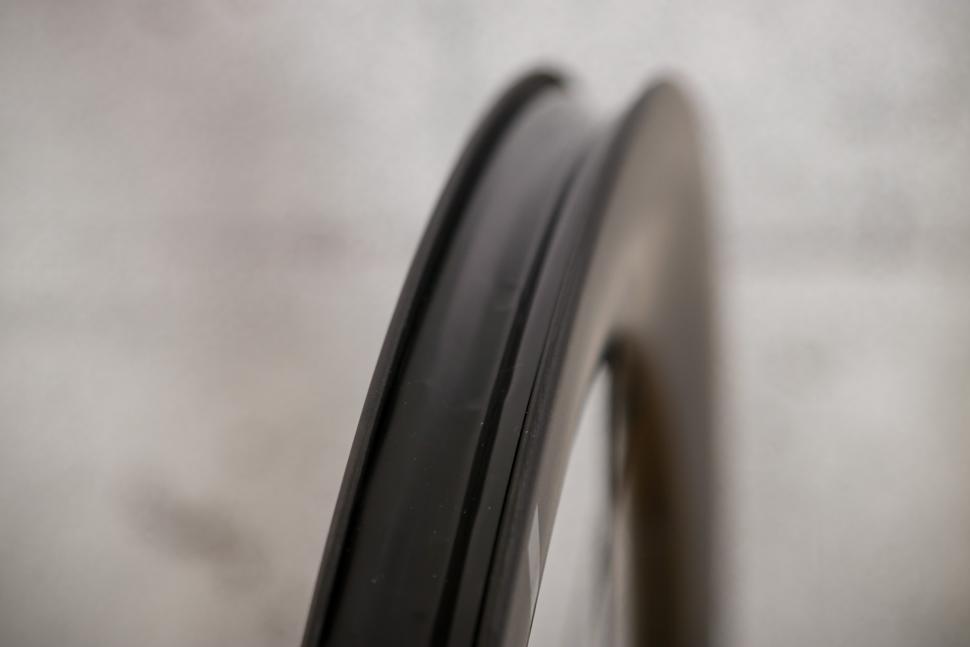 2021 VEL 50 RL Carbon Tubeless Disc Wheelset - rim bed 2.jpg
2021 VEL 50 RL Carbon Tubeless Disc Wheelset - rim bed 2.jpgWhat’s the difference between hooked and hookless bike wheels, and which is better for you?
If you’ve had a look for a new set of wheels in recent years, you might have been left with a sore head while trying to decide between hooked and hookless rims. We've spoken to some of the key brands in the world of road bike wheels to find out their take on the benefits of each system. Which should you go for? Hopefully you'll be better informed on the merits and pitfalls of both by the end of this article...
First off, you might only just have decided that you’d like to try tubeless tyres, and now we go and tell you that there are some minutiae of rim tech to choose between. With that in mind, and if you're not sure of the differences between hooked and hookless, here are some brief explainers and the main differences between them for starters.
Hooked
They look just like your regular clincher rims and, to an extent, they are. Hooked rims support tubeless-ready and standard tube-type clincher tyres. Hooked rims, as the name might suggest, feature hooks at the top of the rim wall.
Pros:
- Wide range of tyres gives users more choice
- Normal tyre pressure range available
- Able to run tubeless or with tubes
Cons:
- Heavier
- More complex to manufacture
Hookless
As the name also suggests, hookless rims do not feature those hooks to hold the tyre onto the rim. The system relies on tyre pressure, specially designed tyre beads and tight tolerances to hold the tyre onto the rim.
Pros:
- Cleaner tyre/rim interface for better aero
- Lighter rims
- Stronger rims
- Lower manufacturing costs can be passed to the customer
- Reduced material waster is more eco-friendly
Cons:
- Requires tubeless-specific tyres, not just 'tubeless-ready
- Range of tubeless-specific tyres is limited
- Limit of 70psi
Hooked vs hookless: the debate that still won't go away
Now you know the differences, you probably won't be surprised to find out that like disc vs rim brakes, carbon vs aluminium and most other things bike, there's been a dispute rumbling over which is best for a good while now.
Many predicted that hookless rims - that are less expensive to manufacture, generally lighter and suitable for the increasingly wider tyres we're all running nowadays - would have taken over from hooked in the road bike market. That still hasn't happened at the time of writing, and many aficionados of the hooked rim will have been feeling smug following Thomas de Gendt's crash at the 2024 UAE Tour (thankfully De Gendt suffered no long-term damage), which has been blamed on hookless rims. Adam Hansen, the president of the CPA, also waded in, predicting that there would be "a mass crash" because of hookless.
Is that definitive proof that good old hooked rims are better, though? Like many things bike tech - and as you'll find out by reading the article above - it's not that simple, and as the cycling market is rather late to the hookless party, the tech is arguably still (literally) bedding in. Watch a Moto GP race and the riders are getting a knee to the floor on corners while riding hookless wheels. If you’ve got a relatively modern car, you’ve most likely got hookless rims on the wheels too. So why doesn't your bicycle?
We wanted to clear up some of the confusion surrounding the hooked vs hookless debate, so we asked Pacenti, Campagnolo, Zipp and Parcours for their take on topics such as rim construction, performance and why each brand chose the system that they did.
Does hookless or hooked offer advantages for rim construction?
When it comes to rim construction, all the wheel brands that we asked are pretty clear about where they stand. Hookless rims are both easier in terms of manufacturing the rim and are stronger when in use.
Zipp says that thanks to the straight sidewalls, “we can use hard tools (ie. steel) to mould the tyre cavity of the rim, as opposed to the silicon mandrels that are generally required on rims with hooks. Steel moulds give us much greater control over the manufacturing process.”
This, Zipp claims, “ensures better compaction of the carbon fibre through the rims which make for a stronger rim with higher impact resistance. It also allows for better resin distribution, which means the rim can be moulded with less resin so the rim is lighter.”
That, for Zipp, makes for an easier time when manufacturing the wheels. But for the end-user, there is another benefit to this, with Zipp claiming they are able to “hold tighter tolerances in the tyre bed cavity, which results in a more precise tyre interface which is, therefore, safer to ride.”
Campagnolo suggests that the benefits of hookless can be achieved on a hooked rim, with some additional engineering effort that the Italian brand says can be found on its Bora Ultra WTO wheels. Campagnolo claims that this is achievable because it owns its full manufacturing process, and so can control all aspects of production.
Luke Humphreys from Pacenti pointed to the benefits when running lower pressures on a gravel, cyclocross, or mountain bike setup. When the straight sidewall contacts the ground due to an object such as a tree root or rock compressing the tyre, the stronger hookless rim stands a much better chance of surviving intact versus a hooked rim.
Are there performance benefits associated with one over the other?
Of the manufacturers that we spoke to, Zipp was the clearest cut on which system offered a performance advantage. Alongside the improvements to the construction process, they suggest that the lack of hooks “means a cleaner transition between the rim and the tyre which results in a more aero setup."
There is also the question of total system efficiency, something that Zipp began talking about with the launch of its 454 NSW, 404 Firecrest and 858 NSW wheels in 2021.
Zipp told us: “Hookless also allows for a larger internal width, without affecting the outside width of the rim. This creates more volume and more support for the tyre, which enables lower tyre pressure and better vibration damping; without affecting the aero profile of the rim. As a result, the rim is plain faster in the real world: according to an independent test made by Aerolab, our new 454 NSW with hookless rims is 10 watts faster than the previous generation.”
If that wasn’t enough, Zipp also points to an environmental marginal gain which also has a positive impact on pricing for customers.
“Overall, better control of the manufacturing means less scrap, and reduction of the costs means a lower price. This allowed new price points for us, such as 303 S at under £1,000 and gave us the chance to reduce the retail price of our Firecrest wheels by $600.
"Being easier to manufacture, hookless rims create less waste so they’re a little better for the environment.”
Zipp is one brand that has passed on some of its cost savings to the customer, but not all brands will do the same. A set of hookless carbon road wheels still represents a significant investment for many normal cyclists, so lower costs isn't something that can be applied across the board.
And while there are certainly performance benefits associated with hookless rims, Campagnolo suggests its hooked wheels "get the same easiness of installation and aerodynamic match with the tyres thanks to the evolved 2 way-fit profile" as well as the new manufacturing process.
Our Campagnolo spokesperson continued: “Our 3D scan also showed that, when it comes specifically to aerodynamics, the majority of tyre manufactures have not developed hookless specific models yet so the tyre beads/side junction is designed to match actually better with a hooked than with a linear rim flange.”
The UK-based wheel brand Parcours also sticks with hooked for its road bike wheels, saying: "For road riding, we haven’t yet seen enough benefit to make the move away from a hooked design. Whilst there may be a performance benefit in future rim designs, at present the test data shows that it is just not there."
So, if you’re not running tubeless-specific tyres, you might be better off with hooked rims.
Humphreys also told us that he finds hookless rims are more prone to spoke tension drop after the tyre is mounted and inflated. This tension drop is common to tubeless wheels and is caused by more air pressing onto the rim compared to a standard tube-type clincher.
The simple solution to this, Humphreys says, is that, where possible, Pacenti installs tyres for the customer so that they can re-tension, re-dish and re-true the wheel before it goes out.
Why are we seeing a growing number of brands using hookless designs?
Campagnolo summarises it succinctly, saying that “hookless offers so many benefits to the end-user while being easier and cheaper to make; it’s clearly the future.”
It’s a feeling that Pacenti echoed, with Humphreys also stating that he feels that hookless is the way that the market is heading, though his reasoning was that the tighter manufacturing tolerances are the key to the better experience for the end-user.
UK-based brand Hunt Bike Wheels cites weight savings, fewer variances in tubeless standards, evidence of "a slightly more aerodynamic shape" in hookless beads and cost savings in its reasoning for going hookless: "There's also a cost reduction owing to a simpler manufacturing process, which we passed on to the rider", says Hunt on its website.
Campagnolo suggests that consumer awareness around the environmental impact of the products that they buy is also influencing manufacturing decisions: “If we, as manufacturers, will be all able to reduce the related production waste it could really have a huge impact on a global scale. Of course, the challenge is still to keep, and possibly improve, the riding performance and the hookless seems a good direction to this respect.”
But while there are clear advantages, Campagnolo also says that hookless isn't yet able to match hooked rims with regards to tyre choice. Riders that opt for hooked rims still have a much broader choice of which tyres they use on their wheels, and if you're a fan of a lovely set of cotton clinchers with their high thread counts and supple casings, hooked is probably still the way to go.
Is there no love for hooked rims?
While all of the brands that we spoke with are in no two minds about where the market is heading, there is one rather vital bicycle component that is holding the hookless standard back, and it is that smaller choice of compatible tyres.
Brands such as Zipp, ENVE and Giant list a range of tyres that are compatible with their respective hookless rims, but the issue still remains that the end-user is limited when buying new tyres.
What's more, revisions by the shadowy European Tyre and Rim Technical Organisation (ETRTO) in 2023 deemed that there should be at least 5mm of difference between the internal measurement of your rim and your tyre's width, meaning the once-popular 25mm internal rim with a 28mm tyre is now against the ETRTO's guidance. This leaves customers (and pro team mechanics) needing to check their wheel manufacturer’s list of approved tyres more carefully, or risk a setup headache.
There is also the not-so-small matter of tyre pressure. Campagnolo points out that “hookless rims forcedly express a maximum tyre pressure (below 5BAR/72psi) in use which is not only different to the maximum one expressed by the majority of tyre brands” which he says can cause confusion for end-users but “also far from what a huge percentage of consumers are still riding.”
What this means for the average cyclist is dependent on their riding preferences. While road riders that are looking for pure speed on a perfect road surface will likely be sticking to tyres between 25-28mm inflated to well over that 72psi figure, many recreational road riders are favouring the floatier, more comfortable ride quality of wider tyres run at lower pressures.
With all of that in mind, why hooked and why hookless?
Zipp pointed us back to the fact that “hookless is a fully standardised interface: hookless rim dimensions have been normalised in ETRTO back in 2019, and have now been included in ISO as well.”
This, Zipp says, gives them confidence in their hookless wheels and the tyres that they recommend, a point that Pacenti also highlights as one of the key factors in converting general riders to tubeless.
Campagnolo, on the other hand, recently released updated versions of its top-of-the-range Bora Ultra WTO and Bora WTO wheels, and the Italians are still sticking with hooked for now. In our original interview three years ago, the brand said that the lack of maturity in the tubeless tyre market is the reason for sticking with hooked rims for the time being. Despite an increasing number of compatible tyres and rims, it appears that hasn't changed.
Campagnolo said it is “not neglecting its [hookless] potential in the future but, for today’s average consumer, hooked systems (that we have in use) are simply still safer and more versatile.”
While Parcours is sticking with hooked for road bike wheels, it is an advocate of hookless for off-road wheels, where the tech is already the standard:
"On balance, at Parcours we believe that hookless rim technology is currently best suited for gravel riding.
"Our Alta & Alta 650B gravel wheels have a hookless rim design, which allows us to use our IMPACT+ rim technology to boost impact resistance and improve overall strength.
"With wide tubeless tyres considered standard for gravel riding, a hookless rim doesn’t remove any real level of choice for our riders when looking at which tyre they would like to run."
So which is actually better?
While Pacenti and Zipp are both fans of hookless rims from a construction and performance point of view, it is telling that Campagnolo has stuck with a hooked design for its latest top-end road wheelsets. Other brands sticking with hooked for road bike wheels include the likes of Roval and Parcours.
Currently, the limiting factor for hookless is tyre compatibility and the limit on tyre pressure which, for many performance-minded road riders, means that hookless rims just won't cut it. If you're sticking with 25mm tyres and looking to run over 72psi, or if you want to run tyres that are less than 5mm wider than your rim, you'll probably have to stay with hooked wheels for a while yet. Even if you don't want to you'll probably have to, unless you want to end up like poor old Thomas de Gendt at the UAE Tour.
But, for riders that have moved over to using larger volume tyres and run the lower pressures that they allow, hookless rims can provide easier setup, more safety, better impact protection at lower pressures and a lighter, slightly more affordable rim.
Hooked or hookless? Let us know in the comments as always.
Jack has been writing about cycling and multisport for over a decade, arriving at road.cc via 220 Triathlon Magazine in 2017. He worked across all areas of the website including tech, news and video, and also contributed to eBikeTips before being named Editor of road.cc in 2021 (much to his surprise). Jack has been hooked on cycling since his student days, and currently has a Trek 1.2 for winter riding, a beloved Bickerton folding bike for getting around town and an extra beloved custom Ridley Helium SLX for fantasising about going fast in his stable. Jack has never won a bike race, but does have a master's degree in print journalism and two Guinness World Records for pogo sticking (it's a long story).
Latest Comments
- Drinfinity 0 sec ago
That corner round the back of the cinema catches riders out in pretty much every race. The pavement there is also fairly narrow, and not barriered,...
- mctrials23 3 sec ago
Is your curb dropped? No, then you don't have a driveway and if a cycle lane is build past your house then tough luck. The rules on dropping curbs...
- Rendel Harris 3 min 46 sec ago
You could argue that either way but it seems reasonable to call it two separate incidents, he was assaulted, went home, later went back to the...
- Rendel Harris 8 min 13 sec ago
It's poor English in English English as well, it should be "I haven't run out of gears". It's confusing the present perfect (something that started...
- David9694 1 hour 22 min ago
in a sense you could: "Cumbria Police arrested a 40-year-old man from Lancaster"
- ubercurmudgeon 1 hour 52 min ago
What a shit world we've created.
- Freddy56 2 hours 21 min ago
....or just buy galibier's Barrier glove and you don't need 2 pair of gloves. I think mine are 5 winters old.
- HollisJ 3 hours 48 min ago
Probably better suited as an all-road wheelset - the internal width of 22mm is kind of narrow for a gravel wheel these days, where the standard is...
- Miller 4 hours 51 min ago
If I was a DS I'd be lambasting Bettiol for being defeatist but as a spectator, his view seems pretty realistic. Anyway I want Pogi to stay out of...
- wtjs 5 hours 27 min ago
I hope this outcome brings some form of closure for Roseanne’s wider family and my thoughts very much remain with them today...


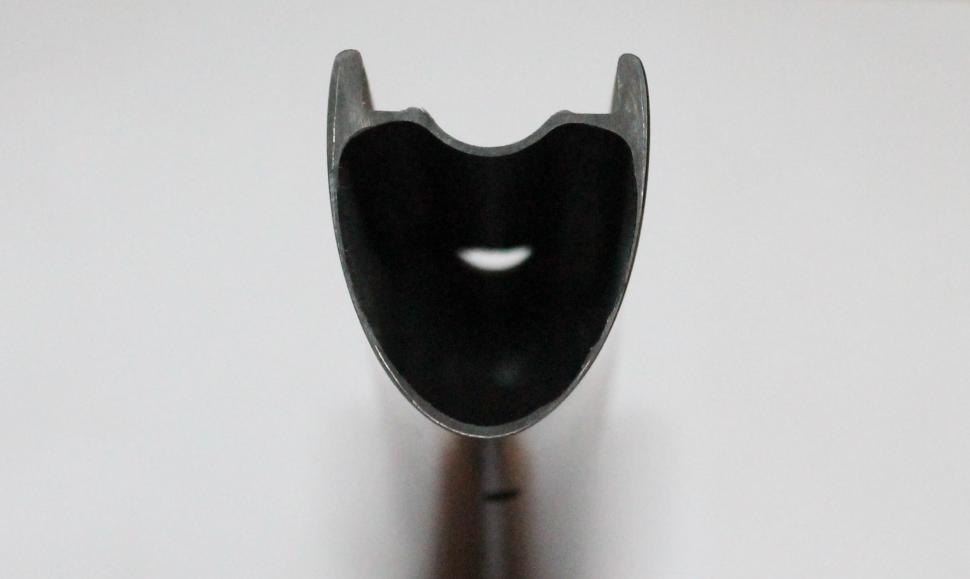




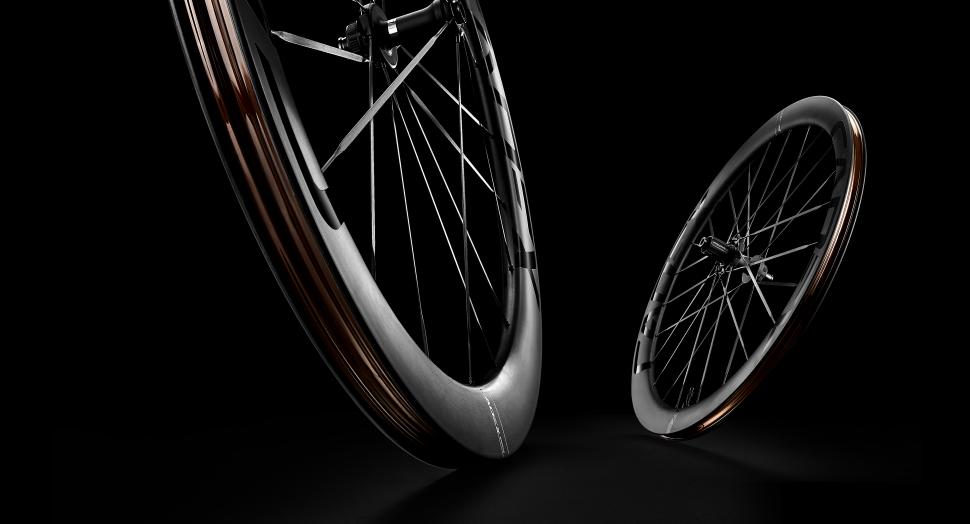

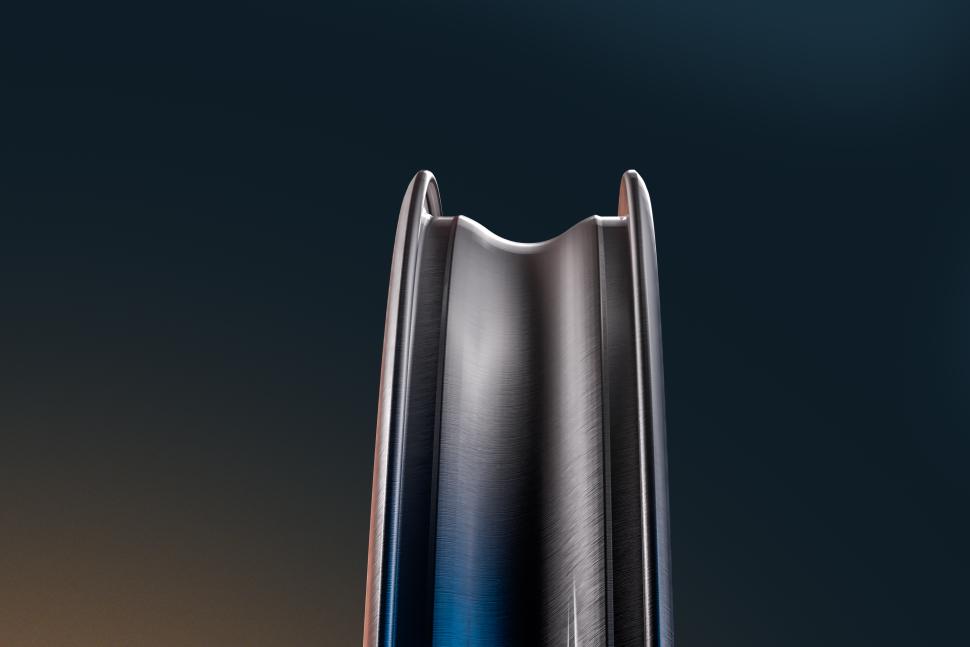
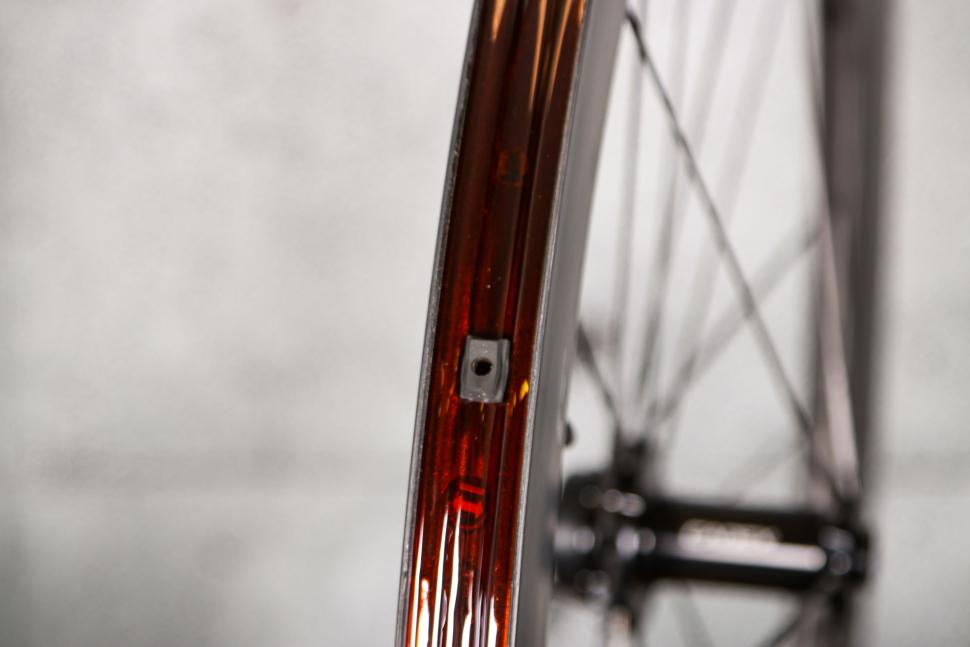
Add new comment
9 comments
The ultra-slow-motion, close-up replay of Tadej’s front wheel tire puncture and low-speed crash may be the beginning of the end for hookless wheels.
https://www.youtube.com/watch?v=Dt9VQ3XmHmI
Why? Never before have we seen such obvious evidence of tubeless tire/hookless wheel separation directly causing a crash. In the replay video, you can see the open gap between the tire bead and rim bead allowing purple tubeless sealant to spray out, lubricating the pavement and causing the tire tread to slip out causing the crash.
The UAE Emirates team uses ENVE hookless wheels. Hookless rim beads do nothing to prevent tire separation during a blowout, especially while leaning or cornering. This is because the absence of a physical hook allows the tire to easily slip out of the rim without lateral inflation pressure. Conversely, hooked wheels, especially in combo with a foam insert, hold the tire more reliably on the rim, preventing roll-off and loss of sealant out the gap. You can read about my own recent experience with a front tire blow-out here: viewtopic.php?f=3&t=175385
The pro cycling season has seen devastating crashes of top riders this Spring (Vingegaard, Roglic and Evenepoel), severely impacting the competition so critical to cycling’s popularity. If there is any SIMPLE way to decrease the likelihood of a crash after a tire blowout, it’s totally worth doing.
The Thomas DeGendt front blowout, wheel failure, tire roll-off and foam insert extrusion this Spring while riding a Zipp hookless wheel, has prompted an ongoing major reevaluation of hookless wheel safety in the pro peloton. Unfortunately, inhibiting the DeGendt crash investigation is the absence of video evidence of what precisely caused the wheel failure and crash. There’s no view of any hole, rock or anything else shattering the rim and leading to tire and insert ejection.
Yesterday’s Giro crash is totally different: clear evidence of separation of a tubeless tire from a hookless rim, causing sealant leakage, slippage and a crash. Watch the video a few times until you are convinced this was the actual crash mechanism. This crash happened to a multimillion-dollar athlete, arguably the best rider of this generation and potentially of all-time.
Low speed crashes are notorious for causing serious and even season-ending injuries. That’s because the force vectors in a low-speed crash are straight down into the pavement. Tadej was EXTREMELY lucky in the 2024 Giro Stage 2 not to have suffered a wrist fracture, broken collarbone, or a concussion.
If Tadej was riding a hooked-bead wheel, particularly in concert with a foam insert (that makes tire roll-off almost impossible), the event would have been nothing more than a flat tire he could ride, lean and slowly turn on until his team car caught up with him rather than a heart-stopping crash with the potential for disaster.
I predict that this rare video of the precise crash forensics involving a hookless wheel will eventually lead to the UCI banning such wheels in competition. Because hookless is a boon only for wheel manufacturers, a cheaper way to make wheels without passing the savings on to the end user, and an unnecessary danger to the rider without any real advantage, Tadej’s crash video may be the beginning of the end for hookless.
[Please understand that I mean no offense to owners of hookless wheels! I know there's a lot of emotion surrounding this issue and I'm sure hookless wheels can be safely used by the average road cyclist. I'm only addressing professional road racing and the desire to keep precious athletes as safe as possible in a very dangerous sport].
Hookless are just worse for the user, better for the manucturer.
They are dangerous. In case of flat, they come off. In case of overpressure, be it from overinflating or hitting an obstacle, the go of the rim, and underinflation causes the same issue.
If the tyre is as narrow as the rim (so aero) it will go out of the rim: can't be properly aero.
It requires precision made tyres (so more expensive) and should require extremely tight and rigid rims and beads. So machines requires to mount tyres.
Terrible idea, thay should be banned as dangerous.
Hooked rims were only standardised in the 70s, with the benefits of security of high-pressure tyres, the ability to use suppler side-walls, and generally improved safety - at the expense of a more complex rim, i.e. one that costs the manufacturers more. Before that, 'hookless' was the norm, it just required heavy, stiff tyres so wasn't really great.
It seems like the only winners in 'new hookless' are the manufacturers who will make cheaper rims and then sell them at premium prices because they're 'new' and 'faster'. If someone can point to a tangible benefit that doesn't triple the cost of my wheel/tyre system, great. But at the moment, I'd have spent more on a single tubeless tyre than I have on inner tubes over the last five years/40k miles. This is not progress that is of any value to even quite dedicated but non-pro riders, so the question has to be - who is this really benefitting?
As to the 'hookless works on cars' - my car runs tyres at ~30PSI and they weigh more than my entire bike. My road bike tyres weigh ~250g and hold in ~85-90PSI.
Completely agree. So they claim better aero, stronger rims and lighter ? YEah and then they fail to adhere more or less to the 105% rule. I run 28mm pirelli on 25iw Reserve. These wheels fly and the tires really shape nicely and come up to 30.5mm as predicated. Why should I run 30mm+ ? Im only 72kg and now already ride at 4.6bar pressure with tubes in these wheels. What they also forget is that the rims are marginally lgihter BUT the tires are typically 100gr per tire more if they have the same thread thickness. Tubeless faster as RR ? Check BRR and compare the tires using TPU inners. The gain is within the error margin ... And on top of that tire thread thickness influences RR and that is what all these tubeless tires miss. And they are then still heavier then their tubed counterpart. So take a tubed proper hooked rim with TPU and the result is same RR, easier maintenance, a lot lighter and more wear resistance. Only on the puncture protection you can argue but that about it. I rode last year 18k km with 1 flat.
I agree about TPU, but I'm not sure drum tests tell us much.
Safety is my number one priority. It seems that there are still hookless questions, so why rush to embrace this commercially driven change?
I think hookless has been done before.
Where's the mention of rim material - was this for carbon rims, aluminium rims or both.
I'll be sticking with hooked for my tubeless setup and hooked for my tubed. When I've run out of sealant, I'll go to TPU all round.
No brand are making premium alloy rims any more, let alone specifically hookless ones. With the advent of disc brakes carbon wheels are a much more sound investment, as your rims won't have a shelf life any more. Alloy rims now are mostly reserved for cheaper bikes and OEM specifications on lower mid tier bikes for cost savings.
The old "hookless" from vintage years works noticeably differently - the tyres used have a thick wire bead and carcass which resists stretch under pressure. Tolerances were still poor so I wouldn't run more than 50psi in them, which should still make those tyres feel firm. Modern tubeless tyres are more supple and the bead is kevlar - modern tyres are prone to stretch a little more. Even with current ETRTO standards hookless can't fully take this into account, hence the 4mm rule introduced last year: it might not go far enough. And of course, no tyre under 28mm wide is hookless compatible for that reason.
With the tougher, wider tyres and lower pressures found off-road (cyclocross excluded), the blowout risk associated with hookless is reduced somewhat and hookless may be viable. But for road, then even stricter controls are required before we can be certain its safe.